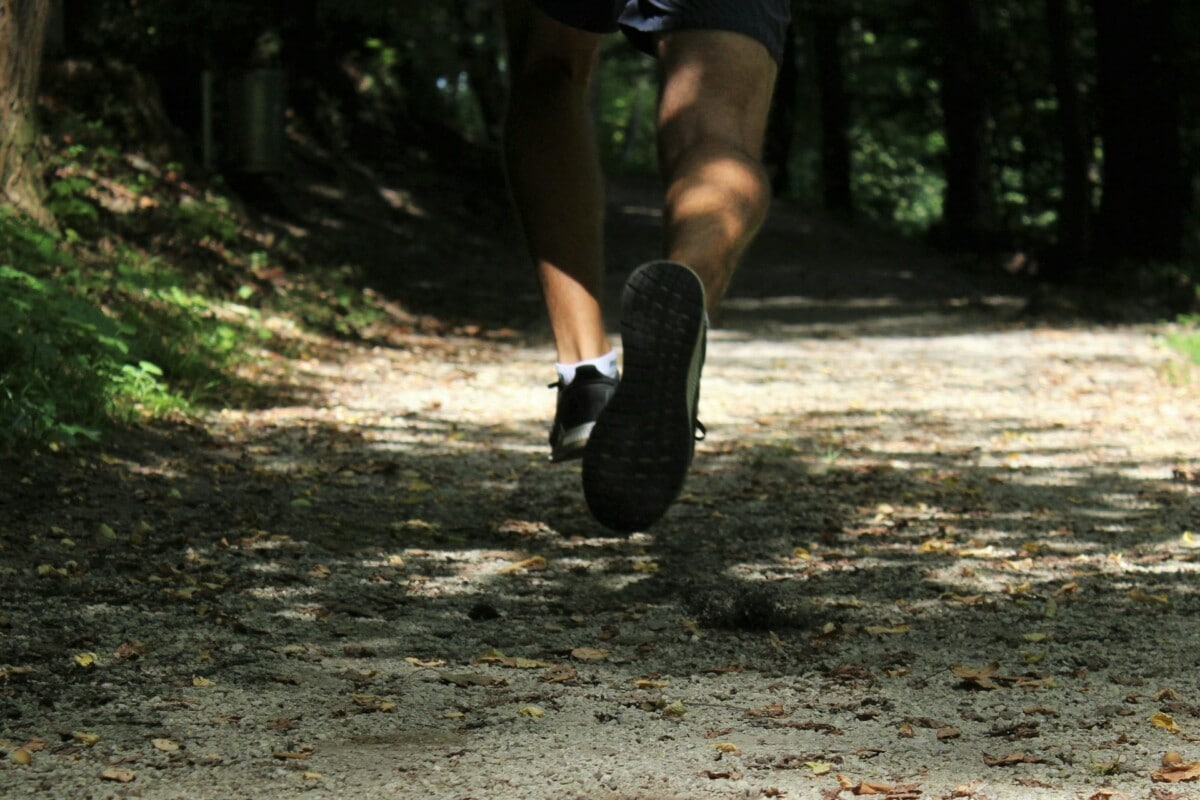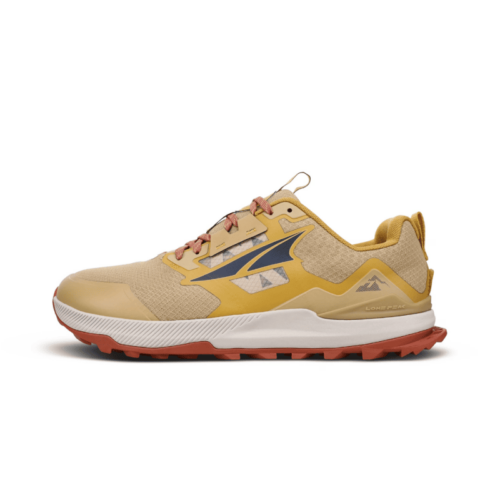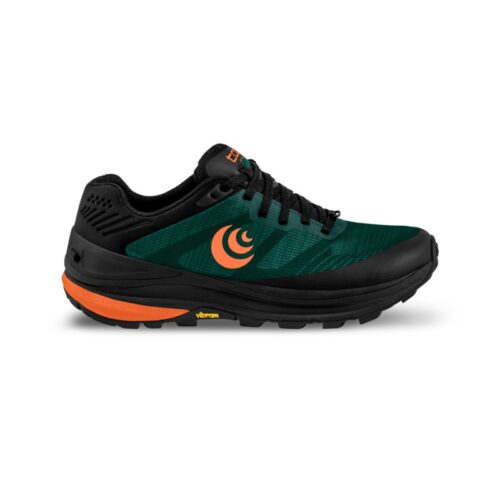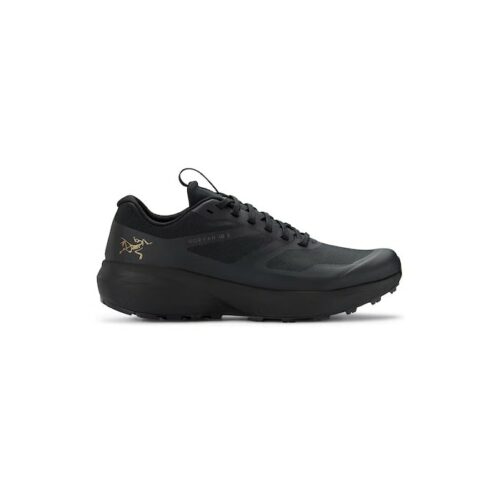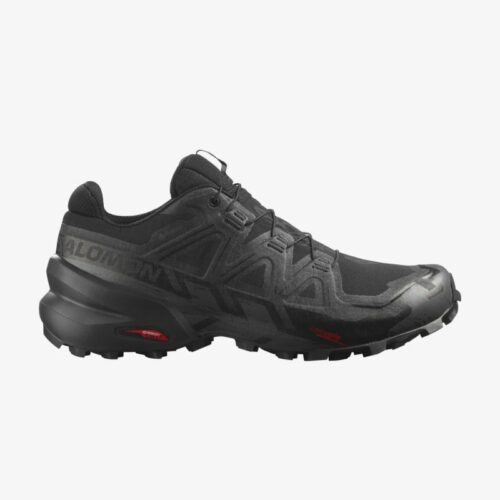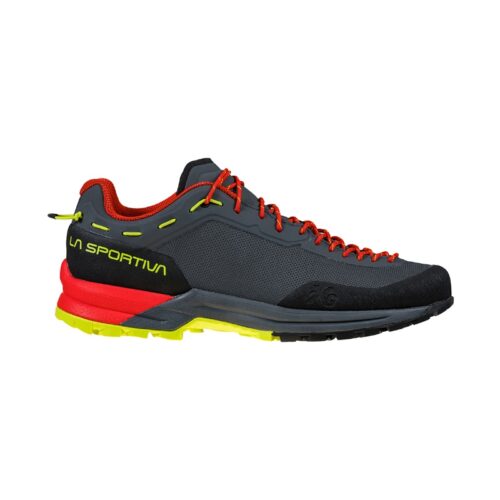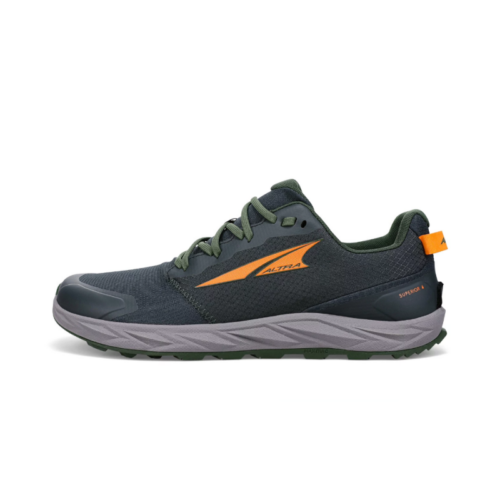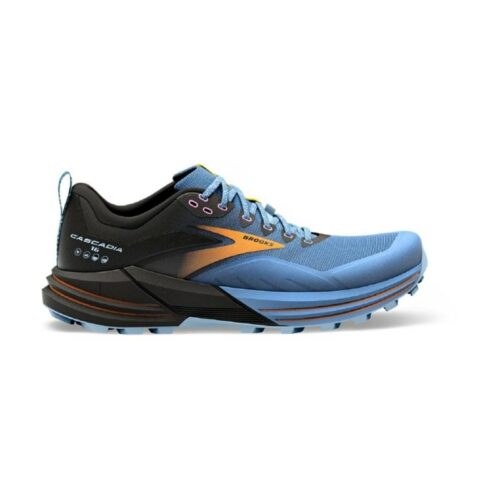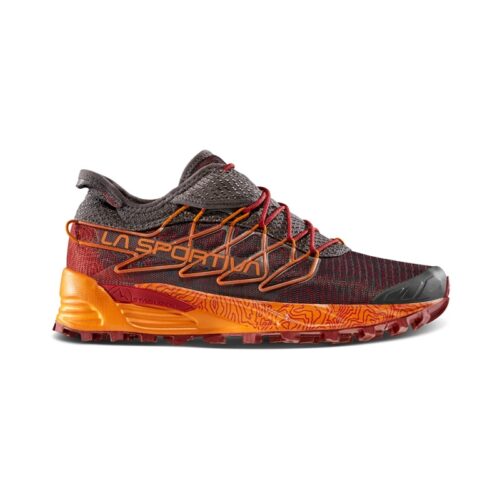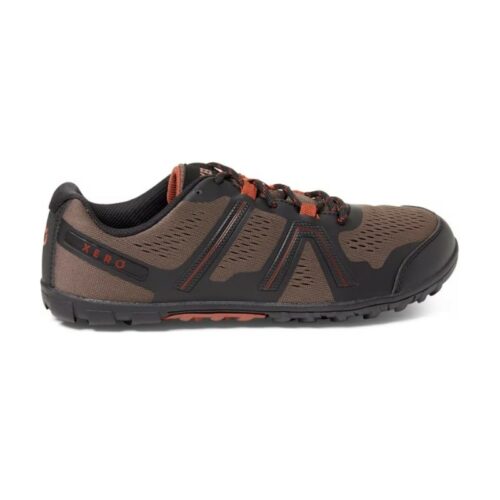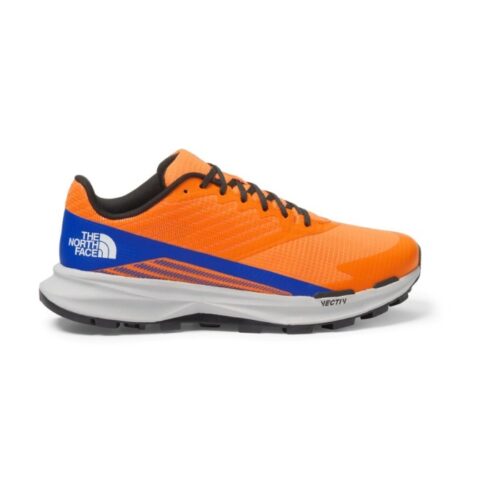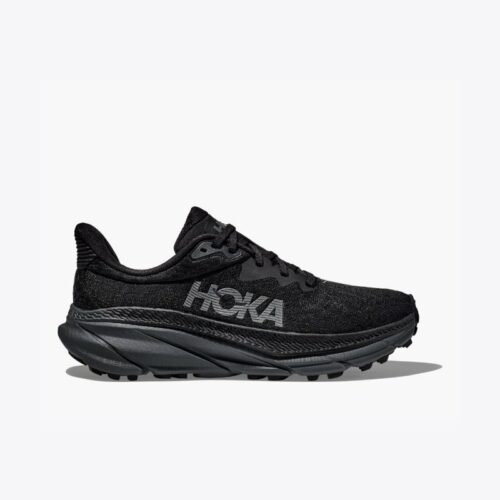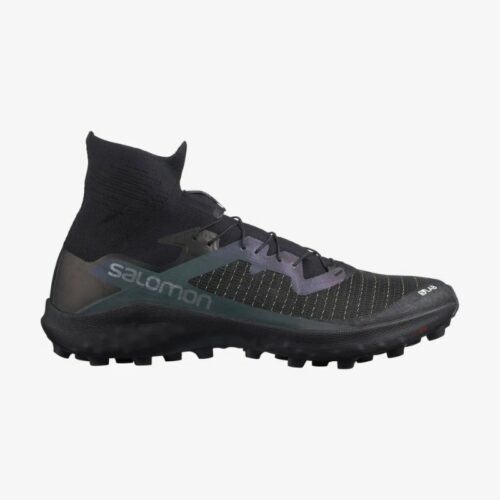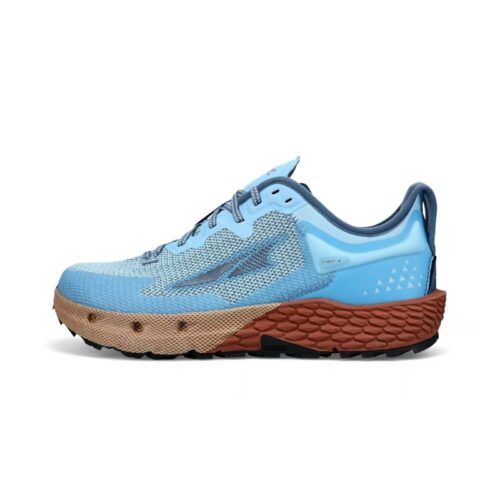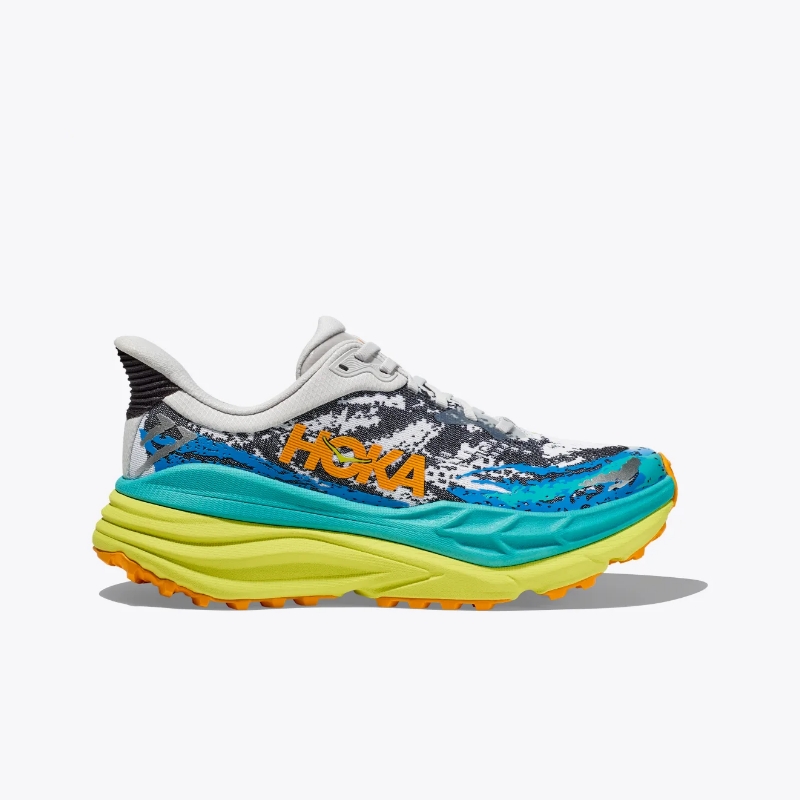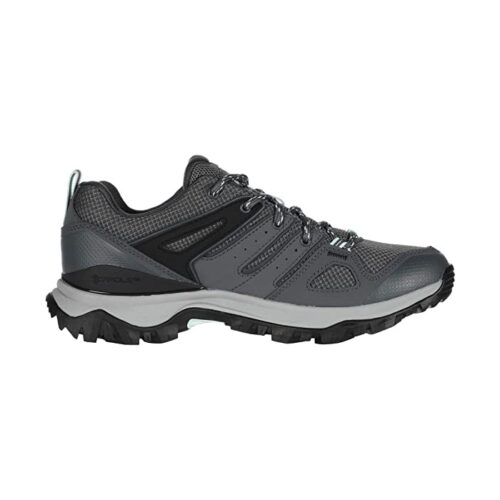The best trail running shoes for hiking will vary depending on the type of adventure you’re going on. This guide will help you find the most suitable pair for you.
The 15 Best Trail Running Shoes for Hiking
Once upon a time, if hikers wanted to get the best trail running shoes for hiking, they couldn’t. That’s because there were only two shoe options: big heavy boots in black or big heavy boots in brown.
Today, however, lightweight, breathable, and comfortable trail shoes are taking center stage for hiking. More than ever, hikers are choosing trail runners over heavy boots. And it makes sense why! When you find a pair of trail shoes that fits right and matches your hiking style, you’ll be hiking faster, farther, and in more comfort.
But, with so many excellent companies on the market selling quality shoes beyond boots, it can be hard even to choose a brand, much less pick out a pair.
Fortunately, after years of hiking in trail running shoes, I know what makes a great hiking shoe. In this guide, I’ll recommend some of my favorite trail running shoes and then discuss some of the major considerations to think about before you buy.
What Are the Advantages of Trail Running Shoes?
Now, you might be thinking: “I’m not running, I’m hiking! Why do I want to wear running shoes?”
First of all, these aren’t the flimsy sneakers that you wear to basketball practice.
Trail running shoes are designed with the wilderness in mind. They have the same considerations as a hiking boot. They are built for tough terrain with grippy soles and protective layers for your feet. And they have the durability to take a beating on the trail..
Here are a few of the advantages trail running shoes have over boots:
- Trail running shoes are much lighter than boots. This makes them ideal for the peak-baggers and thru-hikers out there who are looking to make treks with maximum speed and minimum gear.
- They are much more breathable. This means wet feet will dry out faster, whether from sweat, rain or river crossings. Hiking boots can be waterproof, but waterproof boots are not very breathable, trapping sweat inside the shoe. Plus, if water comes in over the top of the boot, then it doesn’t matter if the outside is waterproof.
- They are less bulky than boots, so they are much easier to pack if you are going on a trip to do some hiking.
- Trail running shoes are more appropriate for city wear than hiking boots. Some are even designed with city wear in mind, so they can be a much more versatile shoe.
The only situation where we would actively recommend boots over trail running shoes is for cold weather conditions (all of that lightness and breathability is not so good in the snow!). But for spring, summer and autumn weather, trail running shoes are perfect.
If you’re still not sure, this article on hiking shoes vs. boots vs. trail runners is a good place to start. Or, if you already know that trail runners are what you’re looking for, these are our 15 best recommendations.
-
Our Top Picks
- Best Trail Running Shoes for Hiking Overall: Altra Lone Peak 7
- Best Trail Running Shoes for Thru Hiking: Topo Athletic Ultraventure Pro
- Best Trail Running Shoes for Support: Arc’teryx Norvan LD 3
- Best Waterproof Trail Running Shoes for Hiking: Salomon Speedcross 6 Gore-Tex
- Best Trail Running Shoes for Climbers: La Sportiva TX Guide
- Best Breathable Trail Running Shoes for Hiking: Altra Superior 6
- Best Trail Running Shoes for Women: Brooks Cascadia 16 Women’s
- Best Trail Running Shoes for Men: La Sportiva Mutant
- Best Minimalist Trail Running Shoes for Hiking: Xero Mesa Trail
- Best Trail Running Shoes for All-Weather Hiking: North Face VECTIV Levitum FUTURELIGHT
- Best Trail Running Shoes for Hiking Long Distances: HOKA ONE ONE Challenger 7
- Best Trail Running Shoes for Hiking Muddy and Slippery Terrain: Salomon S-Lab Cross
- Best Trail Running Shoes for Hiking with Wide Feet: Altra Timp 4
- Best Trail Running Shoes for Hiking with Ultimate Cushioning: HOKA Stinson 7
- Best Heavy Duty Trail Running Shoes for Hiking: North Face Hedgehog Fastpack II
-
Altra Lone Peak 7: Best Trail Running Shoes for Hiking Overall

There’s a reason that the Altra Lone Peak 7 is consistently the most popular shoe on the PCT and other long thru trails. Started in the back of a Utah running store, Altra aims to make trail running shoes that don’t inhibit the way people’s feet naturally work. It seems odd that an idea like “FootShape” shoes would create a disruption in the market, but that’s exactly what Altra did.
The Altra Lone Peak 7 is designed to fit your foot naturally, with a wide toe box and no jacked-up heel. It turns out this design is great for hiking because it allows your foot to splay and swell naturally as you hike.
If you’re coming from more traditional, pointy-toed shoes, you’ll be amazed at how comfortable the Altra Lone Peak is with the room it gives your toes. They also have a good amount of flex, which feels awesome compared to stiffer shoes.
These zero-drop trail running shoes offer moderate cushioning that’s perfect for all-around trail use, and the built-in rock plate protects your feet on rugged trails. Whether you’re going on a quick day hike or thru-hiking for months on end, the Lone Peak has a great amount of cushion and protection.
One thing to be aware of is that Altra’s aren’t known for their durability, and there are definitely other trail shoes that last longer. You should still get 400-500 miles or more out of the Altra Lone Peak 7 without much problem though.
- Pros & Cons
- Technical Specs
- Wide toe box for comfort on long hikes
- Balanced cushioning for protection without being cumbersome
- 0mm heel-to-toe drop lets your feet move naturally
- Most popular shoe for thru hikers on the Appalachian Trail and Pacific Crest Trail
- Rock plates give extra underfoot protection
- Not great for people who like a snug, technical fit
- Durability could be better
Drop 0mm Single Shoe Weight 314g Cushioning Medium Gender Men and Women -
Topo Athletic Ultraventure Pro: Best Trail Running Shoes for Thru Hiking

Topo Athletic is a newer brand on the market, and they have many similarities with the Altra Lone Peak. You’ll see wide toe box designs and some zero-drop models. Most trail runners from Topo have a bit more in common with traditional running shoes though. Some have a moderate heel-to-toe drop, more arch support, and a bit more structure overall.
This makes Topos better for people who aren’t quite ready to jump right into the full zero-drop trend but still want the benefits of wider, more natural-fitting shoes.
The Topo Athletic Ultraventure Pro is a beefed-up version of their classic Ultraventure trail runner that’s meant to be ready for anything from long-distance trail running to peackbagging hikes. If you’re heading out on a long thru-hike, your feet are going to take a beating, and you need a shoe that offers enough protection to minimize fatigue and injury.
With 30mm stack height at the heel and 25mm at the toe, this trail runner offers plenty of cushion underfoot without feeling excessively bulky. The built-in forefoot rock plate and wraparound toe bumper add to the protectiveness of this shoe.
The Vibram MegaGrip outsole is tough and grippy. It has big, well-spaced lugs that grip well in almost any condition (you may want something more aggressive for slick mud).
Because of the tough, burly build, this shoe feels pretty stiff out of the box. While it does break in a bit over time, it will never be soft and flexible. For those who like a more flexible, natural ride underfoot, the Altra Lone Peak may be a better choice.
- Pros & Cons
- Technical Specs
- Tough, protective design
- Roomy toe box
- Fantastic durability
- Grippy Vibram outsole
- Some people may not like the stiffness
Drop 5mm Single Shoe Weight 291g Cushioning Medium-High Gender Men and Women -
Arc’teryx Norvan LD 3: Best Trail Running Shoes for Support

This is one of my favorite shoes on the list and one of the best trail runner shoes for hiking. Arc’teryx is one of the best outdoor brands on the market, and their lightweight trail runners are no exception.
The LD in the name stands for long distance because these shoes are offer the support, cushion, and protection you need for long hikes or runs.
The outside of the shoe checks a lot of boxes. The upper is made of a single, seamless piece of fabric for extra durability. The sides and front of the shoe are coated with a laminate to protect your feet and the shoe from damage. The best part is the sole, which is Vibram MegaGrip.
Vibram is one of the best sole manufacturers in the business. I’ve relied on Vibram soles in countless trail shoes, and I’ve always been impressed by the grip and durability they offer.
On the inside, there is a 9mm heel-to-toe drop and plenty of support in the midsole. The heel is snugly cushioned, giving the comfort and support you need for a long day on the trail. The inner material is quick to dry even after being submerged in water. Many users have said that the upper has been very stable and helped their feet stay planted even on rugged trails.
This pair weighs 580g together; they’re not ultralight, but this is still an impressively lightweight hiking shoe. I would happily take a slightly heavier pair like these if it meant I had more foot protection and a better sole.
The only downside I can see to the Arc’teryx Norvan LD 3 is that they’re a little stiff at first and they require a bit of breaking in. Beyond that, these are some of the best lightweight trail running shoes a hiker could ask for. As a plus, they are quietly stylish for anyone looking to take them traveling.
- Pros & Cons
- Technical Specs
- Single seamless fabric upper for durability
- Versatile
- Comfortable
- Stylish
- Good starting shoe
- Stiff to begin with
Drop 9mm Single Shoe Weight 290g Cushioning Medium Gender Men and Women -
Salomon Speedcross 6 Gore-Tex: Best Waterproof Trail Running Shoes for Hiking

The Salomon Speedcross range has been known for years as some of the best trail shoes in the business. The Speedcross 6 is one of the most popular trail runner shoes on the market, with all the features a trail runner could ask for—but is it suitable for hiking?
On the outside, everything looks good. The soles are made from high-quality rubber with big, aggressive lugs designed to bite down hard on soft, wet terrain. There are lugs facing forwards and backward to provide grip going uphill and downhill.
Unlike some other trail shoes, this sole is designed to prevent mud from sticking between the lugs, so you don’t end up with unexpected extra weight. It is also effortless to clean according to other buyers, which is good for a shoe designed for muddy conditions. However, those prominent lugs make things difficult in rockier terrain.
These waterproof trail running shoes are very comfortable right out of the box. The lacing system and heel cup mean that your foot is very stable in the shoe, and there is an anti-debris mesh which is very effective at keeping out annoying stones and dirt.
The Gore-Tex model specifically has a waterproof-breathable membrane designed to keep your feet dry. This works really well on cold, wet winter runs, but it also means these trail runners can be a bit stuffy in warmer weather.
Overall, the cushioning and protection in this shoe are top-notch and should give a comfortable ride no matter what speed you go.
One downside to consider is that Salomon shoes are known for their tight, technical fit. This is great for keeping your foot locked in on tricky trail runs but can be uncomfortable on longer hikes (or for anyone with wider feet).
In my opinion, these are some of the best trail shoes in wet, muddy conditions. The features that have made these shoes so legendary among trail runners will absolutely benefit any hiker who takes them for a ride.
- Pros & Cons
- Technical Specs
- Waterproof
- Very large lugs for wet/soft/loose terrain
- Designed for excellent comfort
- Amazing shoe for mud
- Good for narrow feet
- Not so good on hard surfaces
- Tight fit
- Not very breathable
Drop 10mm Single Shoe Weight 300g Cushioning High Gender Men and Women -
La Sportiva TX Guide: Best Trail Running Shoes for Climbers

La Sportiva builds some of the best mountain equipment out there, from alpine touring skis to mountaineering boots to rock climbing shoes.
The La Sportiva TX Guide blends the technical fit, stiffness, and grip of a climbing approach shoe with the cushion and comfort of a mountain running shoe. It is built for moving fast in steep terrain and is perfect for climbers wanting to tackle technical scrambles or speed up the approach to a crag or wall.
This definitely feels like an approach shoe and is meant for climbers and mountain runners on near-vertical terrain. It is stiff, durable, and grippy, with a “climbing zone” at the toe for grip on bare rock. Because of that, they aren’t the best for less technical terrain. The tight fit and stiff construction may prove uncomfortable over long distances on trails.
The La Sportiva TX Guide is definitely a purpose-built shoe for high performance on technical, rocky terrain. If that’s what you need, you won’t likely be disappointed in this shoe.
- Pros & Cons
- Technical Specs
- Durable construction
- Excellent grip and performance on near-vertical terrain
- Great support and stiffness for climbing and scrambling
- Too stiff and tight for long-distance hiking
- Less versatile than other shoes
- Heavy
Drop 10mm Single Shoe Weight 350g Cushioning Medium Gender Men and Women -
Altra Superior 6: Best Breathable Trail Running Shoes for Hiking

This is another trail runner from Altra that features their iconic FootShape fit and natural Zero-Drop platform in a lighter, more minimal package than the Lone Peak. These shoes are light, airy, and perfect for speedy hikes or runs.
Underfoot, you get a moderate 21mm stack height, which is lower than many of the trail running shoes on this list. Combined with the 0mm heel-to-toe drop his means these trail shoes feel very nimble, responsive, and flexible, but they aren’t as protective as some others.
The MaxTrac sticky rubber outsole is plenty grippy for most trails, but it isn’t as aggressive as some c on this list. For 90% of people, the grip will be more than adequate, but if you’re tackling really loose, steep, or muddy trails, you may want something more aggressive.
The highlight of these lightweight shoes is the breathable, stretchy mesh upper. It wraps around your foot like a sock, with stretch that makes this an incredibly comfortable trail runner. Combined with the fact that it offers incredible airflow, these shoes almost feel like you aren’t wearing shoes!
Because of its breathability, the Altra Superior is ideal for hot weather hikes or for anyone who doesn’t like the feeling of suffocating their feet in stuffy shoes.
The biggest downside of these trail shoes is their durability. That ultra-breathable lightweight mesh upper just doesn’t offer a lot of toughness, and it can start developing holes around the toes.
You may also want something with just a bit more cushion and protection if you hike on rough trails. The Lone Peaks are a more protective shoe that has a similar fit and performance.
Overall, this is a fantastic lightweight, breathable trail shoe for hiking.
- Pros & Cons
- Technical Specs
- Ultralight trail runners
- Fantastic breathability
- Good overall comfort
- Low-profile, flexible design for natural movement
- Very stable shoe
- Some people may want more cushion underfoot
- Durability isn’t great
- No built in rock plates for
- Grip isn't the best on uneven terrain
Drop 0mm Single Shoe Weight 269g Cushioning Low Gender Men and Women -
Brooks Cascadia 16 Women’s: Best Trail Running Shoes for Women

The Brooks Cascadia 16 is the latest version of a classic trail runner that’s built to take on any trail, from soft forest paths to rocky mountain scrambling. It offers balanced and versatile performance, combining protection, comfort, and responsiveness.
The Brooks Cascadia 16 features a completely new midsole with Brooks DNA Loft v2 foam, which is both softer and lighter than previous versions. With 29mm of cushion at the heel and 21mm in the forefoot, this shoe delivers a soft ride over rocky terrain.
The built-in rock plate helps deflect impacts from sharp rocks and roots on the trail. This underfoot protection makes a huge difference in keeping your feet feeling fresh mile after mile.
The TRAILTACK rubber outsole is aggressive and sticky, with well-spaced lugs to provide excellent traction on loose surfaces.
The women’s Brooks Cascadia 16 has a dialed-in fit specifically for women’s foot shape. That said, some women may find them a bit narrow. If you like more room in your trail shoes, you may try the men’s version, which is wider, or one of the wider shoes on this list (like the Altra Lone Peak).
Another thing to note is that these shoes have an 8mm drop from heel to toe. Many hikers will appreciate the extra padding at the heel, but if you’re looking for more natural movement, you may want to find zero-drop shoes.
- Pros & Cons
- Technical Specs
- Great underfoot protection
- Soft, comfortable cushion
- Good grip in variable conditions
- Narrower toe box
- Not particularly light
Drop 8mm Single Shoe Weight 270g Cushioning Medium Gender Women -
La Sportiva Mutant: Best Trail Running Shoes for Men

La Sportiva sticks to their focus on mountain-oriented equipment with this shoe. The La Sportiva Mutant is an aggressive trail shoe that offers awesome grip and protection.
The outsole on the Mutant is impressive, with big, burly lugs that handle mud and loose gravel really well. It uses La Sportiva’s FriXion XF 2.0 rubber, which sticks to rock really well.
The midsole offers moderate stack height with a 10mm heel-to-toe drop. The foam is quite a bit firmer than many other trail shoes. While this means it doesn’t feel as cushy right out of the box, it is more protective over technical terrain.
The feature that stands out with this trail shoe is the innovative lacing system. You get a burrito-style tongue that wraps evenly over the top of the foot from both sides. The asymmetrical laces connect to cords that run all the way around the foot, meaning you can really dial in the fit.
If I had to describe this trail shoe in one word, it would be “confident.” Between the ultra-grippy outsole, firm (but not too firm) build, and snug fit, it feels ready for anything. I would definitely recommend this for tough day hikes that involve some scrambling. For long-distance backpacking, you may want something a bit more comfy.
La Sportiva is known for making quite narrow, technical-fitting shoes. While the Mutant has more room than some of their other models, it still is quite narrow through the toes. If you know you have a wide foot or prefer roomier shoes, you’ll probably want to look elsewhere. For people who don’t mind a slightly narrower toebox, the La Sportiva Mutant is a bomber trail shoe that’s ready for hiking on the toughest trails.
- Pros & Cons
- Technical Specs
- Awesome grip in most conditions
- Excellent lacing system
- Very protective for technical trails
- Narrow fit
- Heavy and bulky feeling
- Some people may prefer more/softer cushion
Drop 10mm Single Shoe Weight 320g Cushioning Medium Gender Men -
Xero Mesa Trail: Best Minimalist Trail Running Shoes for Hiking

Somewhere around 2008-2010, the idea of barefoot running and minimalist shoes exploded, with new brands appearing around the idea of footwear that’s meant to mimic natural human movement. Christopher McDougal’s book Born to Run was a big part of this trend, as well as radical designs like the iconic (and maybe infamous?) Vibram FiveFingers.
Xero Shoes was a small company based in Boulder, CO that followed the minimalist shoe trend with their ultra-thin sandals for hiking and running. They are one of the few new brands to stay successful after the trend declined, and now they’ve expanded to include an entire range of barefoot-style shoes, sandals, and boots for casual, running, and hiking.
The Xero Mesa Trail is one of the brand’s signature trail shoes, and it really stands out from the others on this list in terms of minimalism.
With a thin 12mm total stack height and 0mm heel-to-toe drop, these shoes let you feel everything underfoot, and that’s the point! They offer an experience close to barefoot running, but with just enough protection and comfort. They also have a wide toebox that’s designed to let your toes splay and move naturally.
There are a lot of advantages to using a minimal, flexible shoe like this for hiking: you can feel the trail, you strengthen your feet and ankles, your body moves more naturally, and you learn to move more skillfully. It definitely isn’t for everyone though.
A minimal trail shoe like this will have a much harsher experience. You’ll feel every rock and root, and after miles of hiking, that can lead to sore feet.
If you are interested in making the switch to minimal shoes, I recommend taking it slowly. Don’t jump right into a 20-mile hike! Instead, start with shorter outings and slowly build up as your feet get stronger.
FYI, the Xero Mesa Trail runs small. I’d go up a half size.
- Pros & Cons
- Technical Specs
- Flexible and wide for natural gait and movement
- Zero-drop shoe
- Super lightweight
- Breathable mesh uppers
- Durable construction
- 5000-mile sole warranty
- Too minimal for many people
- Not the best for narrow feet
- Grip isn't the best on uneven terrain
Drop 0mm Single Shoe Weight 240g Cushioning Almost none Gender Men and Women -
North Face VECTIV Levitum FUTURELIGHT: Best Trail Running Shoes for All-Weather Hiking

The North Face VECTIV Levitum FUTURELIGHT trail shoe has a lot going for it. Thanks to its superior traction system, it does incredibly well on highly technical terrain. It also has alternating lugs to provide lots of balance in tricky terrain. But the top feature of this trail shoe is the FUTURELITE waterproof-breathable membrane.
The FUTURELIGHT uses a special type of nano spinning technology to create a waterproof membrane that still offers impressive breathability. I’m always a bit skeptical of manufacturers’ breathability claims for waterproof shoes, but FUTURELITE beats pretty much anything else out there.
The OrthoLite® Hybrid™ footbeds have incredibly lightweight cushioning, and keep moisture at a minimum. This makes for an overall lightweight, comfortable stride. It’s basically like walking on clouds.
The outsole heel also has a smooth heel-to-toe transition, so your feet won’t get tired on longer treks. These shoes are meant to be a precise fit for technical terrain, so make sure you figure out the exact right size before you buy!
So overall, this is a great trail running shoe for hiking, especially in humid, warm climates where moisture is an issue. It comes at a high price, but it’s worth it.
- Pros & Cons
- Technical Specs
- Lightweight mesh for breathability
- Waterproof
- Great traction and balance for tricky trails
- Expensive
- Moderate cushioning
Drop 6mm Single Shoe Weight 318g Cushioning Moderate Gender Men and Women -
HOKA ONE ONE Challenger 7: Best Trail Running Shoes for Hiking Long Distances

We’ve looked at a few minimalist shoes with very little cushioning. Let’s go to the other end of the spectrum with a brand known for its “marshmallow” shoes – Hoka One One, with their Challenger 7.
This trail shoe has a whopping 29mm of sole and cushioning between the toes and the ground, with an extra 5mm on the heel, allowing you to spring your way down the trail while barely feeling the impact of the ground.
For long-distance hikes, that extra cushion means you can hike farther without beating up your feet. There’s a reason HOKAs have been gaining in popularity among long-distance hikers.
The sole itself has lugs designed to give a better grip in wet and difficult conditions without protruding too much to keep a stable foothold in the dry. It is a reasonably stiff design, so keep that in mind if flexibility is important to you. The upper is made of breathable mesh for fast drying, and the inner is highly supportive, particularly in the arches for maximum comfort.
This is one of the best trail runners for hikers who are looking for a smooth ride. If you hike hard packed trails, have feet that need a bit of love, or just don’t like getting beaten up by every pebble in your path, these are the shoes for you. One caveat I will add: The height of these running shoes may not be suitable for people with weak ankles or poor balance.
- Pros & Cons
- Technical Specs
- Incredibly soft and padded shoe
- Lots of cushioning
- Very breathable
- Popular trail running shoe for thru-hiking
- Soles add a lot of height (this could be a pro, though!)
Drop 5mm Single Shoe Weight 230g Cushioning Very high Gender Men and Women -
Salomon S-Lab Cross: Best Trail Running Shoes for Hiking Muddy and Slippery Terrain

The first thing you’ll notice about these unisex running shoes is the rubber lugs jutting out like shark teeth from every part of the sole. This shoe is hungry for the trail and will eat it up and spit back out behind you, no questions asked. If you need a trail shoe that will handle muddy, soft terrain, look no further!
The Salomon S-Lab Cross is fully optimized for racing in wet, muddy conditions. In addition to the super-aggressive outsole, the minimal cushioning keeps the shoes light when they get wet, and if you are slogging through mud regularly, you will be thankful for this. The upper gaiters allow any moisture to escape the shoe while keeping debris out, and the lacing system keeps the shoe tight and supportive while also allowing an easy on/off.
The durability is also impressive. Salomon, in general, seems to do very well with durability and has created many trail shoes that can take a beating, so if you’re looking for a partner in crime for years to come, this shoe is it. This second iteration is even lighter than the first, which was already pretty light. So, if you are looking to cover a lot of ground, this is the ideal trail running shoes for your hike.
This shoe is a bit more specialized than some of the others listed here. It is designed to chew up muddy, soft conditions and would not fare well on rocks or hard-packed trails. However, if you are looking to cover swampy ground quickly, there isn’t much to compete with this trail running shoe.
- Pros & Cons
- Technical Specs
- Specially designed for soft, muddy, conditions
- High ankle gaiter keeps small stones and other debris out
- Excellent durability
- Suits a forefoot strike
- Minimal cushioning
- Not so good on hard trails
- Not waterproof
Drop 4mm Single Shoe Weight 230g Cushioning Low Gender Unisex -
Altra Timp 4: Best Trail Running Shoes for Hiking with Wide Feet

Here’s another trail runner from Altra that offers a similar zero-drop design to the Lone Peak, but with more cushion.
With 29mm of sole and cushioning with zero-drop, the Altra Timp 4 aims to offer a silky-smooth ride while keeping that grip in any condition, especially the wet and muck. Their innovative sole technology has created an outer sole that provides plenty of grip to keep you stable while hiking.
Along with its sturdy design, it has a built-in attachment for gaiters that can be purchased separately. This gives you an extra layer of protection from debris and rain.
However, the mesh on the upper is not entirely debris-proof, which may be something to consider. The foot box is also pleasantly wide, which will be absolute gold for any wide-footed hikers out there who are tired of the infamous toe-pinch.
Overall, the Timp is a fantastic shoe for people who want roomier zero-drop shoes, while still having plenty of cushion and protection underfoot. These running shoes are fantastic for long-distance hiking.
- Pros & Cons
- Technical Specs
- Wide footbed for larger feet
- Excellent cushioning
- Good for bad weather
- Not debris-proof
Drop 0mm Single Shoe Weight 298g Cushioning High Gender Men and Women -
HOKA Stinson 7: Best Trail Running Shoes for Hiking with Ultimate Cushioning

If you want to hike along rocky trails while feeling like you’re walking on carpet, HOKA’s maximalist running shoes are your best bet.
The HOKA Stinson 7 is the tallest, plushest shoe in HOKA’s lineup of tall, plush running shoes. With a stack height of 38mm at the heel and 32mm at the toe, you’ll have a lot of foam underfoot (almost two inches!). It’s hard to describe the experience of walking in these shoes without actually trying them on. They are seriously cushy.
The benefit of this is that your feet will feel a lot less beat up on long hikes. The foam cushion absorbs rocks, roots, and impact, saving the wear and tear on your feet. The extra cushioning can also help improve your running and walking efficiency on trails.
The massive stack height does have some disadvantages though. Because you’re so far off the ground, this shoe is less stable on challenging, sloping trails and can increase the likelihood of rolling your ankle. If you like feeling planted, stable, and nimble, this isn’t the shoe for you.
- Pros & Cons
- Technical Specs
- Ample cushioning for comfort and protection
- Rockered design for an efficient stride
- Protective toe bumper
- Versatile road to trail shoe
- Wide sole base offers a stable ride for such a tall shoe
- Massive stack height can be unstable
- Limits feeling of the ground under you
- Less grip than other train runners
Drop 5mm Single Shoe Weight 327g Cushioning High Gender Unisex -
North Face Hedgehog Fastpack II: Best Heavy Duty Trail Running Shoes for Hiking

The North Face Hedgehog Fastpack aims to bridge the gap between a pure trail running shoe and a traditional heavy hiking shoe by creating the Fastpack shoe, aiming to be the ultimate trail running shoe for hiking quickly and covering maximum distance.
As you can imagine, since this shoe is designed with hiking in mind, it has made the coveted trade-off between good protection and weight. At 410g, it is a little heavier than a true trail running shoe, but still much lighter than a hiking boot.
This shoe comes with a Vibram outsole that provides plenty of grip in all conditions. The vulnerable points in the shoe are all covered, with plenty of protection. According to some buyers, this shoe is also good in the cold, keeping their feet warm even in temperatures below freezing.
On the inside, an EVA liner gives the foot some protection, and North Face’s Cradle technology helps keep your foot secure in the shoe. That said, there is not a massive amount of cushioning to be found, and the shoe is designed for a more responsive feel. These have a moderate 6m drop, which is just about perfect for most people.
The product advertising leans heavily on the DryVent™ membrane that will keep the shoes waterproof. I am personally ambivalent about this, as their low-cut means that anything other than a small puddle will mean water coming in over the top of the shoe. However, many buyers of this pair have said that the membrane has held up very well over time, so if waterproofing is a feature you want, these running shoes are a good choice.
Overall, this is one of the best hiking shoes for people who need something that can bash around on technical terrain and aren’t concerned with having a tremendous amount of insole support.
- Pros & Cons
- Technical Specs
- Waterproof
- More sturdy and heavier than true trail runners
- Good protection
- Responsive
- Good soles
- Not a lot of cushioning
- Not very supportive
Drop 6mm Single Shoe Weight 425g Cushioning Low Gender Men and Women
Things to Consider When Buying Trail Running Shoes for Hiking
Protection
Your feet are the most crucial part of the body if you’re a hiker. Ruggedrails can really do a number on your feet, so you’ll want to find running shoes that offer enough protection to keep you comfortable and minimize fatigue, bruising, and injury.
Here are some of the top features to look for in trail runners to ensure they offer the protection you need:
- Cushion: Almost all trail runners offer some level of foam cushioning between your feet and the ground, but the thickness and density of the foam make a huge difference. Most trail runners have 10-35mm underfoot. I usually try to stay with moderate-cushion trail shoes with 25-30mm stack height.
- Rock plate: Many of the shoes on this list have an additional layer of stiffer plastic that’s meant to prevent sharp rocks from poking into your foot painfully. This can be a huge benefit on rough terrain.
- Toe bumper: I can’t count how many times I’ve accidentally kicked a rock while hiking. You want shoes with a tough layer of material wrapping around your toes to protect them from stubbing against rocks.
- Overlays: Most trail running shoes incorporate layers of tougher material on top of the breathable mesh upper. These can protect the sides of your feet from scrapes and collisions.
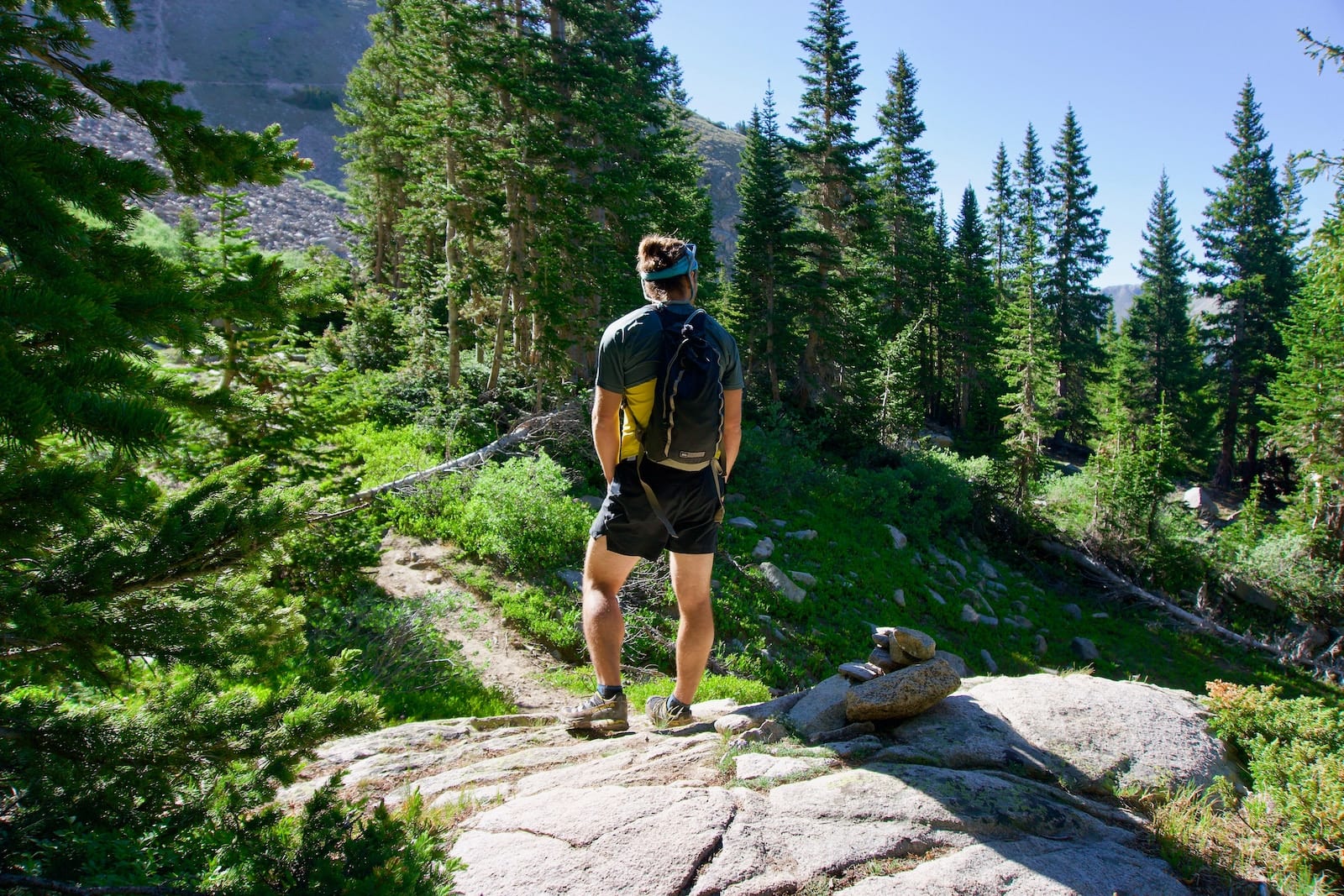
Typically, the more protective a shoe is, the heavier it will be. As with anything, this is a balance. You don’t want a shoe that weighs you down, but you want to keep your feet protected. For hiking, I generally don’t worry too much about the weight of trail runners. They already are way lighter than hiking boots, and I’d rather have a bit more protection.
On the other hand, if you like to stay in touch with the trail and get feedback from your soles, a ‘minimalist’ shoe with very little cushioning might be for you. This is also a better option if you have weak ankles. The minimalist shoes keep your heel closer to the ground giving you better balance. I’ve run in minimalist shoes for years and have never once sprained an ankle.
Grip
The rubber between you and the trail is an essential consideration for any shoe purchase, but especially for a trail running shoe. To find the best trail runners for hiking, you need to look carefully at the grip, flexibility, and durability of the shoe, and match that with the kind of hiking you are likely to be doing.
Good grip is an essential part of a good hiking shoe, and some trail runners will suit your needs better than others. For example, some trail runners have a light tread with small lugs (the sticky out bits of rubber) which are great for smooth, hard packed, established trails but not so suitable for slippery or rocky surfaces.
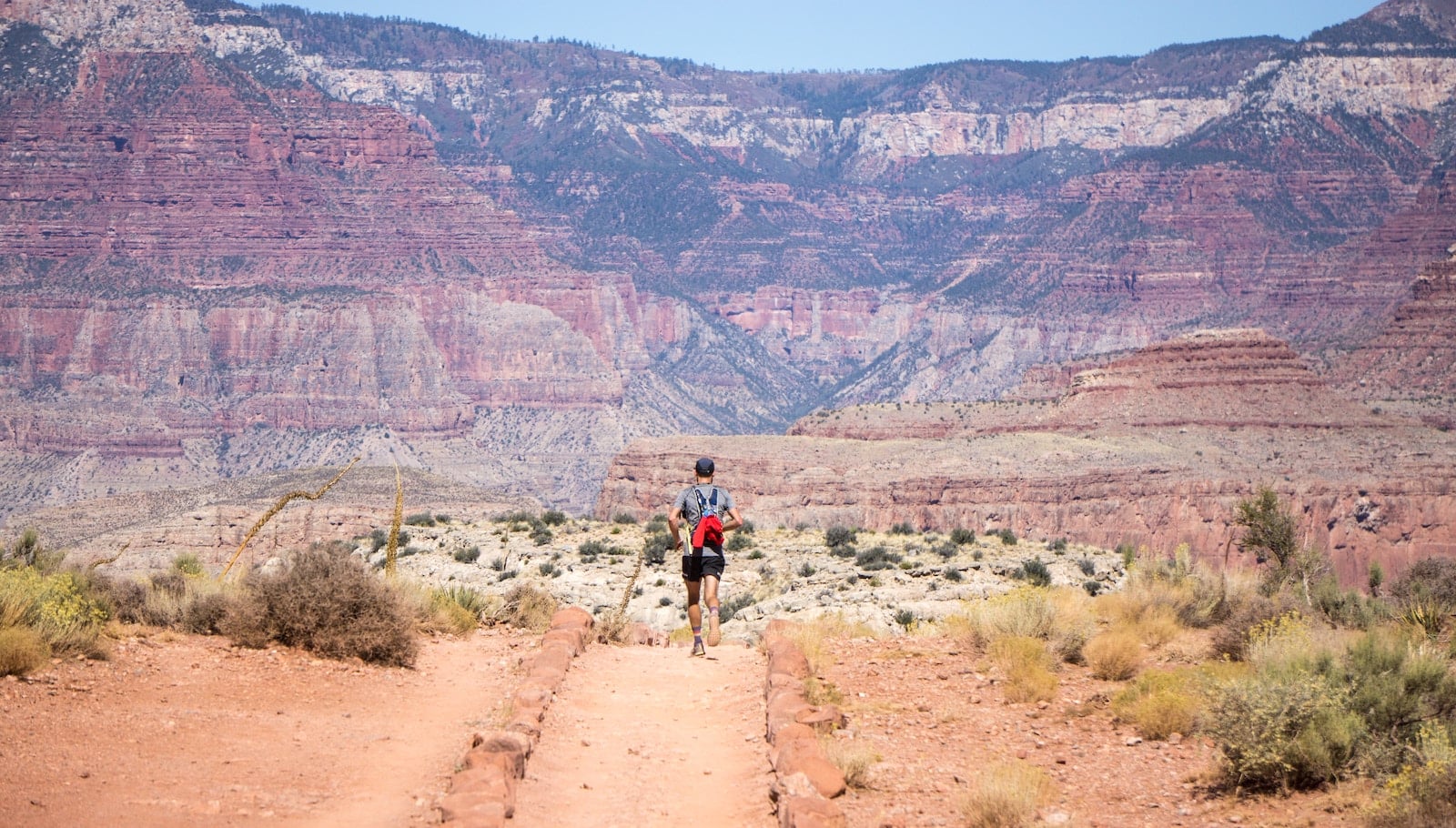
On the other hand, shoes with big gouging lugs will be a miracle in the mud but are likely going to get shredded by hiking rocky, rough terrain. Hiking trails can be varied, so it’s best to take something that is ready for all conditions. In my opinion, the best trail runners for hiking will have soles that grip through any terrain, because you never know what you will get out there in the wild.
Durability is a massive concern for trail running soles. Some companies will sacrifice this durability in order to make their shoes as light as possible, which is not ideal for hikers, especially when trail runnerss can be quite a costly investment!
Softer rubber offers more grip, but is also less durable in the long run. The best trail runners manage to balance grip and durability.
Foot Support and Fit
The inside of the shoe affects how comfortable your hike is, but is also vital to protect your feet from the potential long-term injuries of hiking. As someone who was born with all the natural foot support of a limp noodle, I am always looking out for the supportive factors in any shoe that I buy.
Here are a few questions that you should be asking to find the best trail runners for you:
- How much stability do you need? If you have flat feet or you like a bit of arch support, you should look for shoes that try to keep your foot as stable as possible. Good lace systems, good insoles, and a secure heel are all things you should look for to find the best trail shoes. However, if you want a bit more freedom, look for something a bit more reactive in your shoe selection.
- Does the ‘drop’ between the heel and toe suit your foot? Heel-to-toe drop is the height difference between the front and back sections of the shoe. Trail shoes can have a drop of up to 12mm between the front and back of the shoe, while zero-drop trail running shoes put your toe and heel at the same level.
- Is the toebox the right size? The width around your toes is a huge factor in comfort when hiking. More room at the toebox gives your feet room to splay and swell as you hike. That said, a looser fit also sacrifices some precision and control on steep terrain, so there’s a balance here.
- Does it have the right balance of flexibility and stiffness? You should consider how flexible the fit of the shoes are. Depending on how the soles are made, some shoes will allow more flexion as you step, while others are made of stiffer stuff.
Shoe Fabric and Breathability
One of the main advantages of trail shoes over boots is breathability. Letting water out and fresh air in makes for much more comfortable hiking footwear. There is also the bonus of your tent mates not having to hold their noses as much when you peel off your shoes.
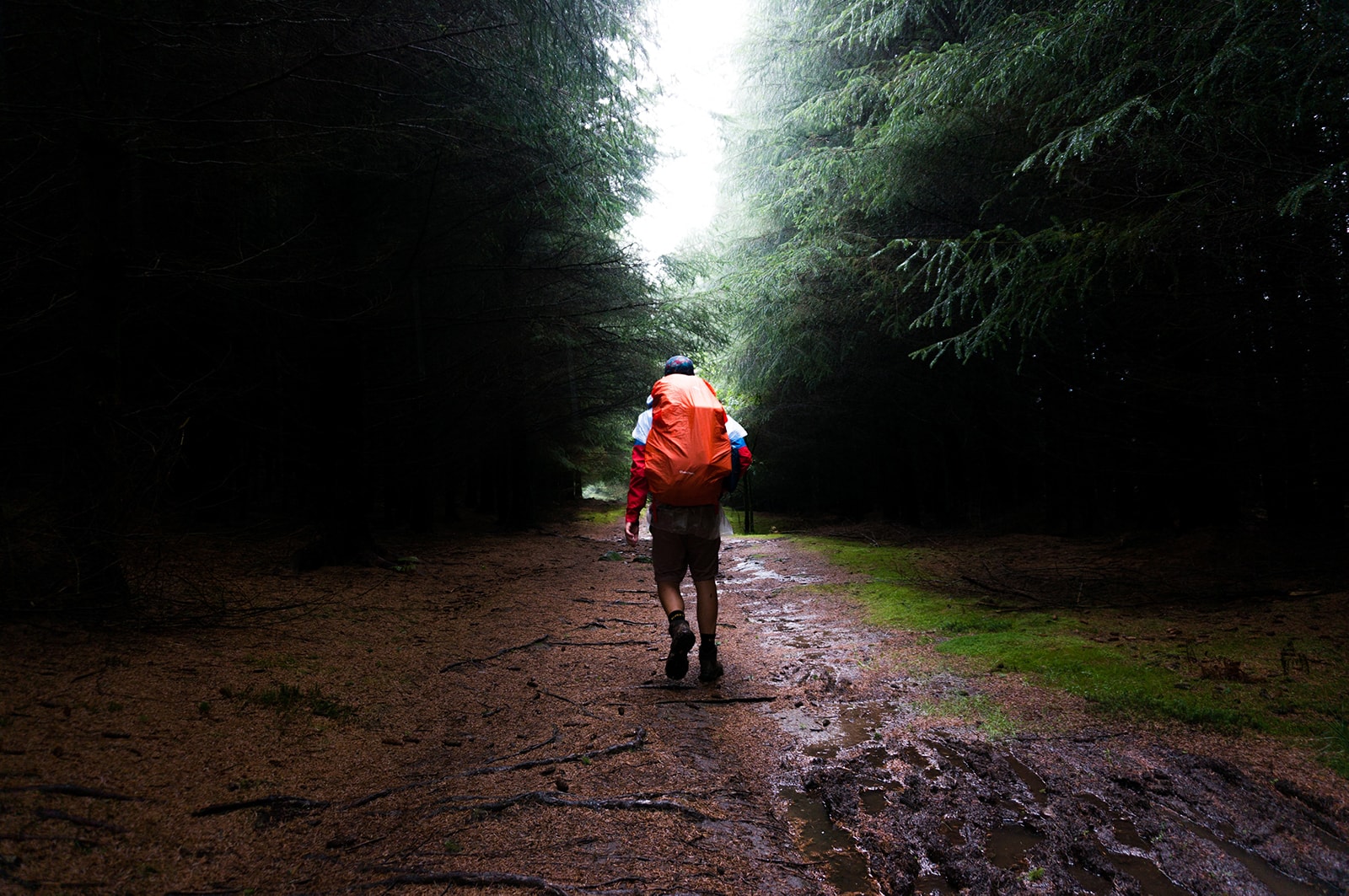
However, there are some drawbacks to this feature. While it lets water out, a breathable mesh may let in debris during your hikes, such as sand, dirt, and small stones, which is not ideal. Some shoes add a sock-like anti-debris cover for your foot, which definitely seems to protect against the worst of it. If you hate bits in your shoe, this is a key feature to look for.
Some shoes will also include a waterproof Gore-Tex membrane in the upper part of the shoe. I have always been a little skeptical of features like this. That’s because if you are in conditions wet enough to warrant waterproofing, water is likely to be running down your legs or over the top of your shoe anyway, which defeats the purpose. These membranes can reduce the breathability of the shoe as well, meaning that once the water is in, it’s not going anywhere.
I usually would rather have a shoe that dries quickly than one that claims to be waterproof.
That said, if you are someone who really hates wet feet and isn’t looking at crossing any rivers or streams, then this is a feature you might want to have.
So, there you have it, travel freaks: our greatest hits of trail running shoes, along with the essential buying considerations to make sure you know exactly what you’re looking for. Just remember that your hiking shoes should be as personal as your journals from your long-haul treks, so make sure they feel right.
Happy hiking!
Trail Running Shoes FAQs
-
Can you use a trail running shoe for hiking?
Yes, trail running shoes are one of the best footwear choices for hiking because they’re lightweight and breathable.
-
Which running shoes are good for hiking?
For hiking, look for trail running shoes that have plenty of grip.
-
Are Nike trail running shoes good for hiking?
Nike trail running shoes work fine for hiking, but Nike has all sorts of human rights and environmental problems in its supply chain, so I’d avoid the brand altogether.
-
Are trail running shoes good for walking on pavement?
Trail running shoes are good for walking on pavement, but you may wear out the tread faster than normal.
-
Can you use trail running shoes instead of hiking boots?
Yes, trail running shoes are a great alternative to hiking boots. They are lighter, more breathable, and more comfortable.
